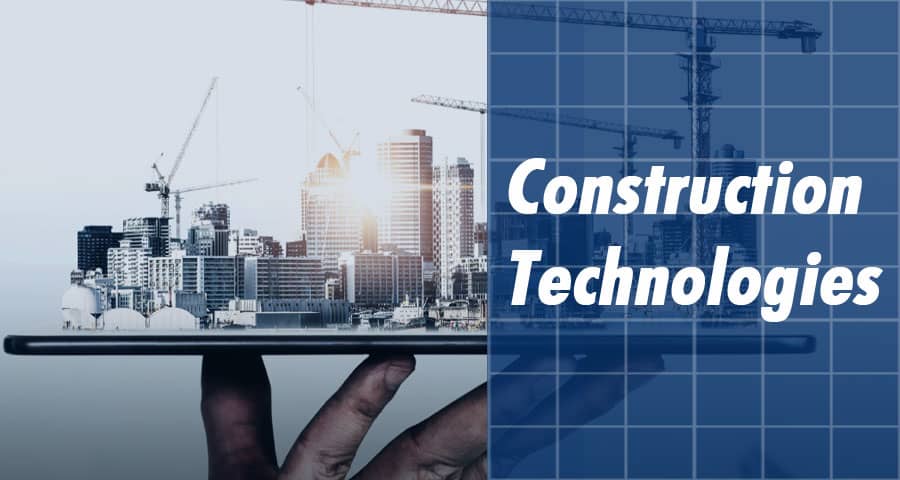Unveiling the Top Construction Technologies Revolutionizing the Industry

In today's rapidly evolving world, the construction industry stands at the forefront of innovation and technological advancement. As demands for efficiency, sustainability, and safety continue to rise, construction technologies are constantly evolving to meet these challenges head-on.
Artificial Intelligence (AI) and Machine Learning
Artificial Intelligence (AI) and Machine Learning have emerged as game-changers in the construction sector. By harnessing the power of data analytics and predictive algorithms, AI facilitates smarter decision-making, enhances project planning, and optimizes resource allocation. From automated equipment operation to predictive maintenance, AI-driven solutions are revolutionizing every aspect of the construction lifecycle, leading to improved efficiency, cost savings, and risk mitigation.
Building Information Modeling (BIM)
Building Information Modeling (BIM) has become an indispensable tool for architects, engineers, and construction professionals alike. By creating a digital representation of the entire building process, BIM enables stakeholders to visualize, plan, and simulate construction projects with unparalleled accuracy. With features like clash detection, 4D scheduling, and quantity takeoff, BIM streamlines collaboration, minimizes errors, and enhances project outcomes, ultimately delivering higher quality buildings in less time and at reduced costs.
Prefabrication and Modular Construction
Prefabrication and modular construction techniques are transforming the way buildings are designed and constructed. By fabricating building components off-site in a controlled environment, prefabrication minimizes waste, accelerates construction schedules, and ensures higher quality standards. Moreover, modular construction allows for greater flexibility and scalability, enabling rapid deployment of structures for various applications, including residential, commercial, and industrial projects.
Sustainable Construction Practices
In an era of increasing environmental awareness, sustainable construction practices have gained significant traction across the globe. From green building certifications to renewable energy integration, sustainable construction encompasses a wide array of strategies aimed at reducing carbon footprint and preserving natural resources. Innovations such as solar panels, energy-efficient materials, and water recycling systems are not only environmentally friendly but also economically viable, offering long-term savings and operational benefits to building owners and occupants.
Robotics and Automation
Robotics and automation are revolutionizing construction sites by automating repetitive tasks, increasing productivity, and improving worker safety. From bricklaying robots to autonomous vehicles, these cutting-edge technologies are reshaping the way buildings are constructed, leading to faster project delivery and enhanced precision. By augmenting human labor with robotic solutions, construction companies can tackle labor shortages, mitigate risks, and achieve higher levels of efficiency and quality in their projects.
Augmented Reality (AR) and Virtual Reality (VR)
Augmented Reality (AR) and Virtual Reality (VR) are blurring the lines between the physical and digital worlds, offering immersive experiences and enhancing visualization in the construction industry. By overlaying digital information onto real-world environments, AR facilitates on-site decision-making, construction sequencing, and quality control. On the other hand, VR enables stakeholders to explore virtual prototypes, simulate construction scenarios, and detect design flaws before breaking ground, resulting in fewer change orders and cost overruns.
Advanced Materials and Nanotechnology
Advanced materials and nanotechnology are pushing the boundaries of what's possible in construction, offering unprecedented strength, durability, and sustainability. From self-healing concrete to nanocoatings for weather resistance, these innovative materials are revolutionizing the built environment, extending the lifespan of structures and reducing maintenance costs. By leveraging nanotechnology, construction companies can create lightweight, high-performance materials that are resistant to corrosion, fire, and environmental degradation.
Conclusion
In conclusion, the world of construction is undergoing a paradigm shift driven by technological innovation and digital transformation. From AI-powered project management to sustainable building practices, the construction technologies discussed in this article represent the forefront of industry advancement. By embracing these innovations, construction companies can unlock new opportunities for growth, efficiency, and sustainability, ultimately shaping a brighter future for the built environment.
